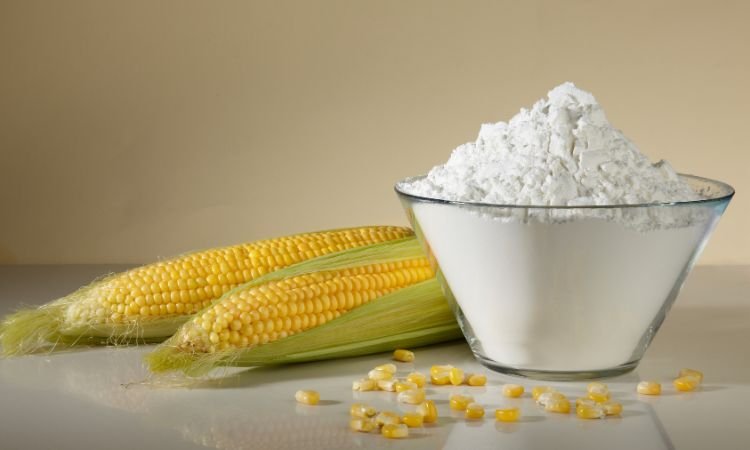The global corn starch market size reached a volume of approximately 87.15 million tons in 2023. The market is expected to witness further growth in the forecast period of 2024-2032, growing at a CAGR of 2.70%, and is estimated to reach a volume of 110.76 million tons by 2032. This growth trajectory is driven by the increasing demand for corn starch across a variety of industries, including food and beverages, pharmaceuticals, animal feed, textiles, and packaging. As consumer preferences evolve and industries continue to seek sustainable, cost-effective alternatives for production, corn starch has emerged as a vital raw material due to its versatility and wide range of applications.
In this blog post, we will explore the dynamics of the global corn starch market, including its key drivers, market segmentation, regional analysis, and competitive landscape, along with the latest trends and developments expected to shape the market through 2032.
Market Overview
Corn starch is a carbohydrate extracted from the endosperm of corn kernels and is widely used in various industries for its ability to provide texture, consistency, and energy. It is a fundamental ingredient in the food and beverage sector, especially in processed foods, while also playing a key role in the pharmaceutical, chemical, and paper industries. The growing demand for processed foods, animal feed, and biotechnological applications has bolstered the corn starch market’s expansion.
The shift toward healthier and more sustainable products, along with the rise of bio-based chemicals, has added to the increasing consumption of corn starch. As a renewable resource, corn starch is an attractive alternative for manufacturers looking for sustainable solutions in industrial processes. The growing adoption of modified starches for specialized applications, such as pharmaceuticals and adhesives, has further fueled the demand for corn starch across different sectors.
Market Segmentation
By Type
Native Starch
Native starch, in its natural form, is the most commonly used type of corn starch. It is widely utilized in the food and beverage industry for purposes like thickening sauces, soups, and desserts. In addition, native starch plays a key role in pharmaceuticals as a binder or disintegrant in tablet formulations. Its applications in cosmetics, adhesives, and paper production also contribute significantly to the overall demand for native starch.
Modified Starch
Modified starch is created through physical or chemical processes that alter its properties to meet specific application needs. The modifications can enhance properties such as gelling, stability, and water absorption, making modified starch a valuable ingredient in a wide variety of applications. Modified corn starch is used in food processing as a thickener, stabilizer, or emulsifier and is increasingly used in industries like textiles, paper, and bio-based chemical production. The growing demand for modified starches for specialized food formulations, such as low-fat, gluten-free, and dairy-free products, is expected to drive market growth in this segment.
Sweeteners
Corn starch is also a key raw material in the production of sweeteners like high fructose corn syrup (HFCS) and corn syrup. These sweeteners are essential in the food and beverage industry, particularly in processed foods, snacks, beverages, and confectionery. The increasing use of HFCS as a sugar substitute in processed foods and drinks continues to boost the demand for corn starch, especially in the food industry. With a global rise in obesity and health-conscious consumer trends, however, there is a shift toward using alternative, lower-calorie sweeteners, which might influence demand for corn-based sweeteners in the future.
By Application
Food and Beverages
The food and beverage industry is the largest consumer of corn starch, accounting for a significant share of the global market. Corn starch serves as a thickening agent, stabilizer, and emulsifier in a wide range of processed foods, including sauces, gravies, soups, puddings, and confectionery products. As consumers increasingly demand processed, convenient foods with longer shelf lives, the demand for corn starch in this sector is expected to grow. Additionally, corn starch is a critical ingredient in gluten-free, low-fat, and low-sugar product formulations, which are becoming more prevalent among health-conscious consumers.
Animal Feed
The rise in livestock farming and the growing demand for animal products globally have contributed to an increase in the consumption of corn starch in animal feed. Corn starch is used in animal feed as a source of easily digestible energy. The expanding livestock farming industry, especially in regions like North America and Asia-Pacific, is driving the demand for corn starch in animal feed formulations. As the global population increases and the demand for protein-rich food rises, the need for corn starch in animal feed is expected to grow significantly.
Pharmaceuticals and Chemicals
Corn starch is widely used in the pharmaceutical industry as a binder, disintegrant, and filler in tablet formulations. It helps control the release of active ingredients and ensures the tablets hold together properly. In the chemical industry, corn starch is used in the production of bio-based chemicals, adhesives, and paper products. The increasing focus on sustainable and bio-based materials in industrial processes is driving the adoption of corn starch in chemical manufacturing.
Textiles
The textile industry uses corn starch in the sizing and finishing processes of fabrics. Starch helps improve the texture and rigidity of fabrics, making them easier to handle during manufacturing. Modified corn starches are also used in textiles for applications that require better durability and performance. As the global textile industry grows, so does the demand for corn starch in fabric production.
Paper and Corrugates
Corn starch is increasingly used in the paper and corrugated packaging industries for applications such as binding, coating, and adhesives. Modified corn starch helps improve the quality, strength, and printability of paper products. As global packaging demands continue to rise, particularly for sustainable, eco-friendly packaging solutions, corn starch’s role in paper and corrugated products is set to increase.
Regional Analysis
North America
North America remains a leading player in the global corn starch market, with the United States being one of the largest producers and consumers of corn starch. The growth in the food and beverage sector, coupled with an increase in animal feed consumption, drives demand in this region. Additionally, the U.S. has a well-established corn production system, which makes corn starch a readily available raw material for industries. The growing focus on bio-based chemicals and sustainability in manufacturing is also contributing to market expansion in North America.
Europe
The European market for corn starch is expected to grow steadily, with increased demand from the food, pharmaceutical, and chemical industries. The growing awareness of sustainable practices in Europe is leading to a shift toward using renewable resources like corn starch in manufacturing processes. Countries like Germany, the UK, and France are witnessing rising demand for corn starch in food products and biodegradable materials.
Asia-Pacific
Asia-Pacific is anticipated to be the fastest-growing region in the corn starch market. Countries such as China, India, and Japan are experiencing rapid industrialization and urbanization, leading to increased demand for processed foods, animal feed, and industrial applications. Additionally, the region’s growing population and expanding middle class are driving the consumption of corn starch in food and beverages, as well as in pharmaceuticals and animal feed.
Latin America
The Latin American market for corn starch is benefiting from the growth of agriculture in countries like Brazil and Argentina. These countries are major corn producers, which makes corn starch readily available for domestic industries. As the demand for processed foods and animal feed increases in the region, the consumption of corn starch is expected to rise.
Middle East and Africa
The Middle East and Africa are emerging markets for corn starch, driven by increasing demand in food processing, pharmaceuticals, and animal feed. The region’s growing population and the expansion of the agriculture sector are contributing to market growth. However, challenges related to corn production and supply chain logistics may impact the growth of the market in this region.
Competitive Landscape
The global corn starch market is highly competitive, with a mix of large multinational companies and regional players. Major companies like Cargill, Archer Daniels Midland (ADM), Ingredion, and Tate & Lyle dominate the market. These companies have a wide range of corn starch products catering to various industries, and they focus heavily on innovation, sustainability, and expanding their product portfolios to meet changing consumer demands.
Smaller regional players and specialized companies also have a significant presence in niche segments, such as modified starches and bio-based products. The market is witnessing increasing mergers, acquisitions, and partnerships as large players seek to strengthen their position and expand into emerging markets.
Key Trends and Developments
- Sustainability: There is a growing focus on using renewable resources and reducing carbon footprints. Corn starch is being increasingly adopted for its sustainability in industrial processes, including the production of bio-based chemicals and biodegradable packaging materials.
- Product Innovation: The development of modified corn starches for specialized applications such as low-calorie foods, gluten-free products, and sustainable materials is a key trend in the market.
- Rising Demand for Bio-Based Chemicals: As industries shift towards sustainable alternatives, corn starch is gaining traction as a raw material for bio-based chemicals, adhesives, and plastics.
- Technological Advancements: Advancements in corn starch processing technologies, including the development of enzymes for more efficient extraction and modification, are enhancing product quality and performance.



